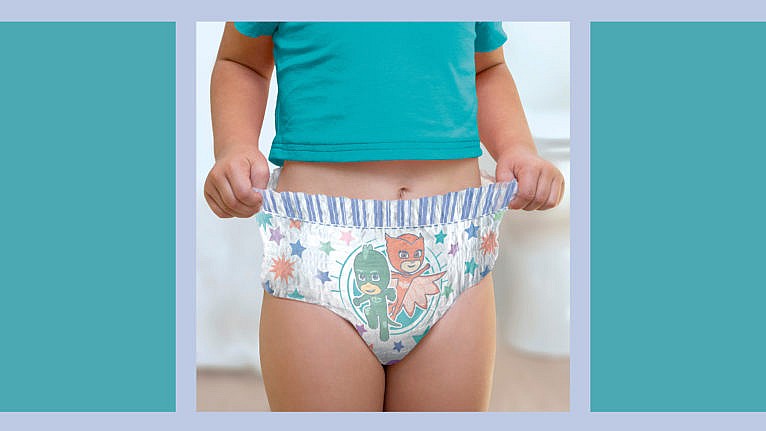Knowing your child is in the right place developmentally is the first step. Reach this long-awaited milestone with these tips.

Created for 
For many families the start of a new school year is a time for new routines. It gives us a chance to re-focus and set up new habits that will help us get though another year of school and child care. One of the things many families start focusing on during this back-to-school and back-to-routine time is potty training. But potty-training isn’t easy, especially because there’s no single way to do it. Using the toilet independently involves motor skills, awareness of bodily functions, and the willingness to stop playing and run to the bathroom when the urge hits. For these reasons, children are ready for potty training at different stages, usually sometime between the ages of two and three. Watch for signs of readiness and follow these tips from Pampers Easy Ups, who wants to help make the journey a little easier and encourage your toddler every step of the way.
Is your child potty ready?
The biggest tell that your toddler is ready for potty training is when they express an interest in sitting on the potty and going like Mommy or Daddy. It makes the job easier and will only take them a couple of days to figure out their body’s cues for going.
There also needs to be awareness that the pressure down there means it’s time to pee or poop. Some kids might come out and tell you, others might purposely go somewhere private to go in their diaper (like behind the couch), or they might remove a wet diaper and ask to be changed. Pooping on a schedule—every morning after breakfast, for example—is another sign, as is waking up from a nap with a dry diaper.
Lastly, toddlers need both the motor skills and the focus to go to the bathroom independently. They should be able to pull their pants down and up, climb onto the potty, and sit there long enough to actually go.
Getting started
Once your child is ready to potty-train, you might want to consider starting with a transition underwear like Pampers Easy Ups. With a 360-degree stretchy waistband, Pampers Easy Ups look, fit and feel like real cotton underwear. The fun character designs from PJ Masks and Trolls will help make potty training fun and exciting for your toddler and will also give you peace of mind knowing you have the protection of Pampers.
Now that your toddler is more familiar with the concept, there are a few things you can do to set them up for success. First, choose a relatively calm time when you’re going to be home a lot and can stay on top of potty visits.
Next, get them involved in potty training. Give them choices, where possible, and make it fun. Read stories about going potty with them so they know what to expect. Then let them decide whether they want their own training potty, or if they want to use the big toilet, and have them choose the potty or a training seat.
Reward success
When your toddler finally goes pee or poo in the toilet, shower them with praise so they know they’re doing well. To encourage them to keep up the good work, you may want to use a sticker chart so they can keep track of their success, too.
Pitfalls to avoid
Potty training is supposed to be fun and exciting, but it can be fraught if parents have unrealistic expectations. If your kid just isn’t interested, don’t push it. Try again in a few months. It’s best to just wait a little while longer than to have them struggle and get frustrated with it.
Above all, be patient. For some kids potty training clicks in a few days, while others don’t get the hang of it for weeks. The good news? Your child will be done with diapers long before he leaves home.
For more information on how to help make potty training more fun, visit the Pampers website.
FILED UNDER: PAMPERS0921
Source link : https://www.todaysparent.com/sponsored/is-your-toddler-is-ready-for-potty-training












